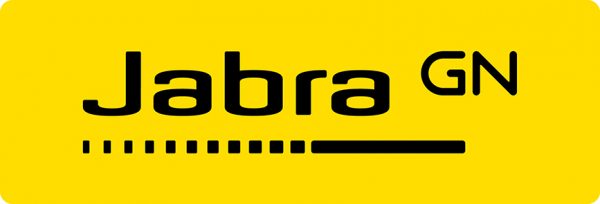Working from home now considered the most productive option while noisy colleagues are biggest distraction to getting the job done

In line with World Productivity Day on June 20th, Jabra, the global leader in audio and communication technology, is revealing the top workplace productivity trends. These are based on a survey [1] amongst business professionals in the US, UK, Germany and France.
Global trends summary:
• Workspace: Home is where the productivity is: four times more employees in 2018 perceive working from home to be the most productive option for them, compared to 2015.
• Hindering factors: Noise is still considered the number one deterrent to workplace productivity. The type of noise that annoys office workers most in all countries is colleagues talking to each other in their direct vicinity.
• Mobility: The workforce has become more mobile between 2015 and 2018
• Meetings: Office workers see lack of preparation (38%), decision-making (30%) and attendees coming in late for a meeting (30%) as the key obstacles to productive meetings.

Country specific key findings:
• US: According to 50% of employees, discussions without a proper direction are the main obstacle to productive meetings.
• UK: Half a working day (43%) is spent away from the desk at the office, be it walking around (13%) or driving to places (9%).
• France: The majority (56%) of employees listen to music to focus or block out office noise.
• Germany: Half of office workers (52%) are negatively affected by colleagues asking questions or dropping by for a chat.
Global business battle
Efforts to improve workplace productivity have long remained a constant battle for businesses globally. From the type of workplace to office dynamics, several factors play a critical role in influencing productivity levels at work. Recent data from The Conference Board [2] shows a slight uptick in global productivity, but nowhere near a return to the pre-crisis growth rates – though continuing curiosity about how we organise work to improve productivity is key in keeping this momentum.
Research has shown that, on average, employees are distracted at work every three minutes [3] and that it can take us as long as 25 minutes [4] to refocus. In a world where businesses are striving for every possible efficiency and productivity gain, there is an imperative to resolve the age-old conflict between collaboration and concentration.
Work is an activity, not a place
Home office has emerged as a clear winner when it comes to productivity, with four times more employees in 2018 perceiving working from home to be the most productive option for them, compared to 2015. Nearly one in three (28%) UK employees consider working from home to be the most productive – yet, interestingly, the majority (60%) are not allowed to. This highlights that UK businesses still have a long way to go in providing flexible working options for their employees.
While hot desking was the buzz word in the workplace just a few years ago, 2018 has certainly turned it cold: only 4% of companies offer this type of office environment.
What remained the same over the past three years is the fact that the ‘open office’ (30%) is the most widespread office design. This makes it of utmost importance to understand how to make optimal use of open office spaces while limiting the hindering factors.
Interestingly, temperature and amount of light were highly ranked in all markets as – when not at a comfortable level – negatively impacting productivity. Also cleanliness is considered an issue, though compared to the other markets, the French hardly (5%) find this of importance.
Hindering factors
Although noise is still considered the number one deterrent to workplace productivity, fewer office workers in the UK (38%) and US (35%) listed noise as an issue in 2018 compared to 2015. This is a major difference from mainland Europe though, where Germans (54%) and French (48%) rate this issue much higher. The type of noise that annoys office workers in all countries most is colleagues talking to each other in their direct vicinity. Nevertheless, it is a positive trend that in some countries people start to experience less noise disruption, proving that technology like Active Noise Cancellation (ANC) has had a significant impact on noise perception and increasing workplace productivity. The ongoing debate about how we organise work is making its mark.
Another way that business professionals choose to block out office noise is listening to music. Most employees listen to music at work to focus better. Music creates both a concentration zone and functions as a tool to relax and recharge. Employers must recognise that employees use music to lower their stress levels and work more productively. Interestingly, the survey highlighted that there are office workers in every country that are unsure if they are allowed to listen to music at work, suggesting that businesses should offer clear guidelines on multimedia consumption to avoid productivity being disrupted by uncertainty.
Greater mobility of staff
The research also shows that the workforce has become more mobile in the past three years. A higher number of people claim that more time is spent away from their primary workplace. In the UK, on average almost half a working day (43%) is spent away from the desk at the office, be it walking around (13%) or driving to places (9%). This data indicates not only a growing need to consult with colleagues to access expertise, but also a shift in the way we do business. In today’s digital age, the need for mobile interaction and information exchange is increasingly important.
Meeting challenges
For most office workers meetings are considered an excellent platform to share knowledge between colleagues. Worryingly, in the past three years, we do not seem to have made much progress in making meetings more productive.
Office workers see lack of preparation (38%), decision making (30%) and attendees coming in late for a meeting (30%) as the key obstacles to productive meetings. One of the fastest growing annoyances is meetings not starting on time due to technical issues: the US saw a 100% increase and the UK a 111% increase in such occurrences in 2018 compared to 2015.
The Millennial workforce (18–35 years) in particular find discussions without direction (46%) to be the biggest cause of unproductive meetings, highlighting that businesses must look into ways to improve their internal meeting structures to ensure the most productive use of time.
 Bjoern Ekner, Senior Director Product Marketing at Jabra said:
Bjoern Ekner, Senior Director Product Marketing at Jabra said:
“Monitoring the state of modern office work is a key initiative for us and I am pleased to once again share our insights. In order to understand the dynamics of knowledge work, we have to stay curious.
We need to create the optimal environment for office workers to thrive and eliminate what gets in the way of their focus and the ability to collaborate. This year’s number one hurdle for productivity in the workplace, was once again noise. I hope managers and leaders will join Jabra in helping secure the ‘concentration zone’ for our employees.”
Additional Information
 To download the Infographic Click Here
To download the Infographic Click Here
Jabra, part of the GN Group, is a leading developer and manufacturer of communications and sound solutions. We are committed to letting people hear more, do more and be more than they ever thought possible. We believe that through sound, we can transform lives. Jabra innovates and empowers with sound solutions for businesses and consumers, producing corded and wireless headsets, portable and in-office speakerphones, and sports earbuds. Jabra employs 1,000 people worldwide, and produced an annual revenue of DKK 4 bn in 2017. The GN Group operates in more than 90 countries, and has almost150 years’ experience in innovation and delivering reliability and ease of use. Founded in 1869, employing over 5,000 people, and listed on Nasdaq Copenhagen, GN makes life sound better.
For additional information on Jabra visit their Website or view their Company Profile
[1] Source: Jabra & Kantar ‘Knowledge Worker Study 2018’, June 2018, 1,350 respondents


